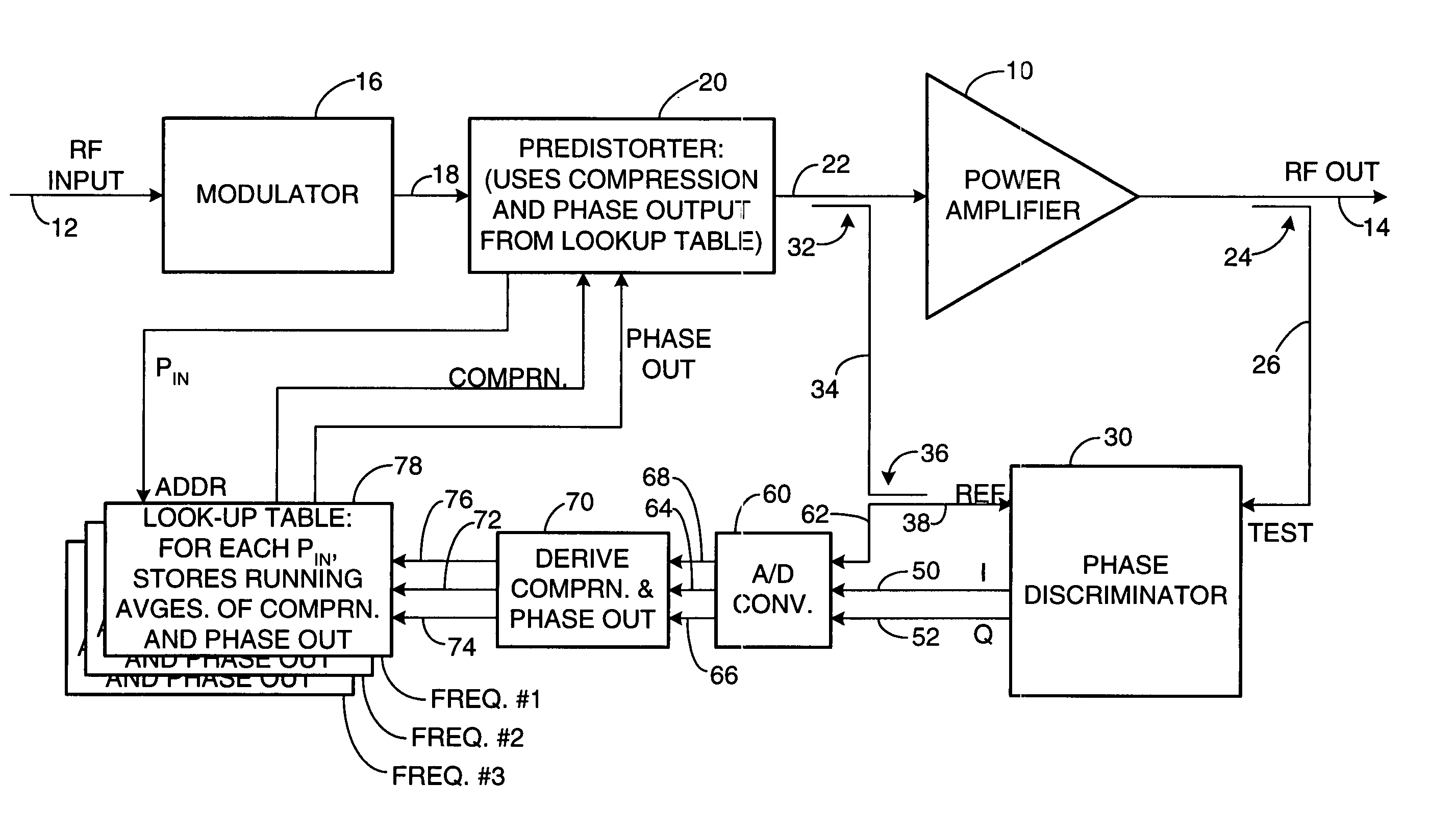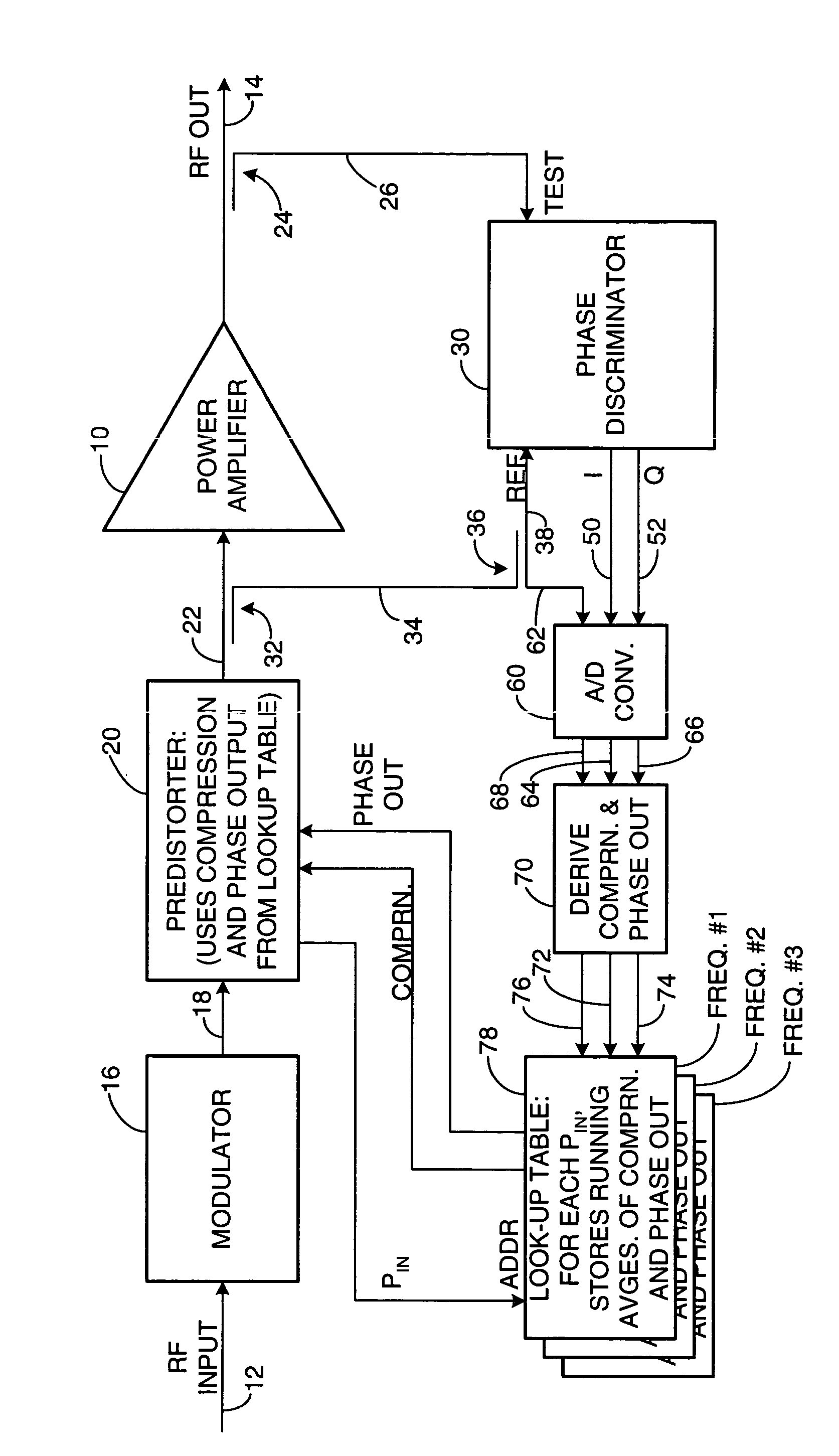Digital predistortion for power amplifier
a technology of predistortion and power amplifier, applied in the field of amplifiers, can solve the problems of the adaptability of the predistortion applied to the amplifier to the change of the amplifier, and achieve the effect of compensating amplifier distortion and being simple to implemen
- Summary
- Abstract
- Description
- Claims
- Application Information
AI Technical Summary
Benefits of technology
Problems solved by technology
Method used
Image
Examples
Embodiment Construction
[0010] As shown in the drawing for purposes of illustration, the present invention pertains to a predistortion technique for use in power amplifiers for radio-frequency (RF) transmitters. A power amplifier is subject to unwanted distortion in both the phase and amplitude of its output when operated outside its generally linear characteristic that governs operation at relatively low input and output powers. Predistortion of the input signal has been proposed as a solution extending the linear region of operation of an amplifier. U.S. Pat. No. 5,867,065 discloses a predistortion technique that compares input and output digital signals at baseband frequencies. This approach requires complex supporting circuitry, including local oscillators, a downconverter and a demodulator to convert the amplifier RF output signal back to baseband for comparison with the input signals.
[0011] In accordance with the present invention, an RF power amplifier is subject to predistortion directly, at the f...
PUM
 Login to View More
Login to View More Abstract
Description
Claims
Application Information
 Login to View More
Login to View More - R&D
- Intellectual Property
- Life Sciences
- Materials
- Tech Scout
- Unparalleled Data Quality
- Higher Quality Content
- 60% Fewer Hallucinations
Browse by: Latest US Patents, China's latest patents, Technical Efficacy Thesaurus, Application Domain, Technology Topic, Popular Technical Reports.
© 2025 PatSnap. All rights reserved.Legal|Privacy policy|Modern Slavery Act Transparency Statement|Sitemap|About US| Contact US: help@patsnap.com


